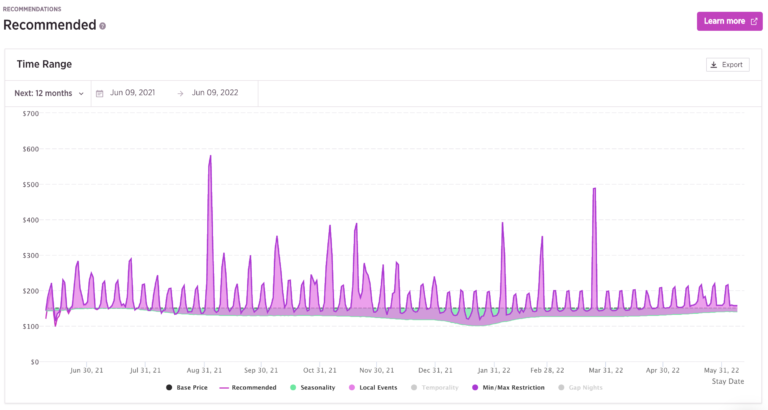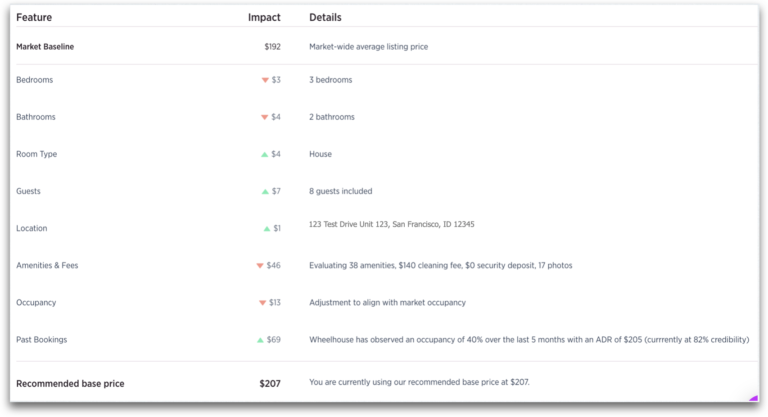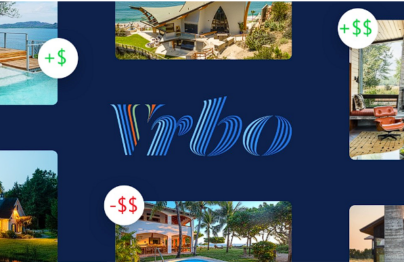Let’s dive deeper into a few of these factors…
Location Impact
We are often asked, “but how does Wheelhouse price me against my back door neighbor who doesn’t have an ocean view?” Two words – “Spatial Kriging”**.
The exact location of a property can dramatically impact the value of a listing. To determine this impact, our model leverages something called, “Spatial Kriging”, to decipher the difference between the price we’d recommend for a unit and the actual median price of that unit.
So, if we see a consistent difference between what we would price for a listing in that location, and the actual prices, we know that’s most likely a high-value neighborhood, and change pricing accordingly.
Occupancy & Booking Patterns Impact
One challenge in the short-term rental space is that many units are unintentionally (or intentionally!) ‘incorrectly’ priced, so we can’t take prices at face value.
To counteract this, we consider Occupancy data, which helps us better understand whether a unit is overpriced or underpriced, compared to the market. This way we can determine how much a specific listing’s prices should be factored into pricing recommendations.
So, if we see a nearby property’s Base Price is high, but their Occupancy is low – we know that’s not a dynamically priced listing (scary, we know!) and will not look to that listing for pricing signals.
In short, we look at your market’s data to determine a price that will maximize Revenue and optimize Occupancy.
Additionally, while the millions of properties in the STR space are very unique, Booking Patterns (when you and your competitors are booking) have proven to be very efficient when recommending prices.
To explore this more, check out the Reactive Demand Model blog post.
How do we determine accuracy?
For our model to work, we are careful not to use market data that is too specific, or not specific enough to ensure the market is accurately reflected. We avoid biases by including outliers on both sides of the base price. Lastly, we make sure none of your competitor’s listing prices are weighed too heavily.
Through our new partnership with Key Data, we’re able to leverage more data, in more places than ever before. Which means better pricing, insights, and recommendations for you!
Final thoughts.
Wheelhouse’s Pricing Engine is a very well-oiled machine that is made to recommend optimized rates, and allows you to tweak our recommendations (even the Base Price) while still benefitting from our advanced, data-science backed, dynamic pricing tool.
Add your strategic touches along the way and watch Wheelhouse take your Revenue Management to the next level 🚀
If you want to learn more, check out the Base Price Model section of our in-depth, highly technical, Pricing Engine blog post. Or, the easy-to-read How Wheelhouse’s Pricing Works blog post.
Questions? Feel free to reach out anytime – hello@usewheelhouse.com
** Kriging is an advanced geostatistical procedure that generates an estimated surface from a scattered set of points with z-values.














